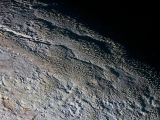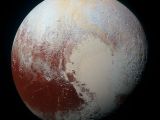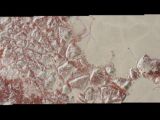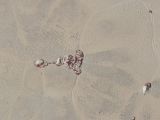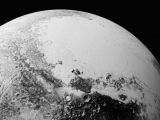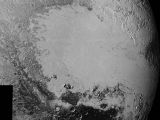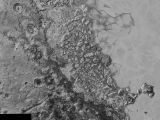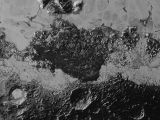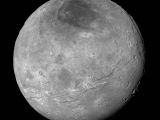NASA's New Horizons spacecraft, launched back in January 2006, has delivered yet another set of close-up views of the surface of dwarf planet Pluto.
Of these latest high-resolution images to reach us all the way from the edge of the Solar System, one in particular has astronomers scratching their heads, a look of utter astonishment in their eyes.
The view, available in the gallery below, brings into focus odd-looking terrains that scientists say kind of look like snake or maybe dragon skin. Comparing these landscapes to tree bark isn't far-fetched either.
“It looks more like tree bark or dragon scales than geology. This'll really take time to figure out,” says Washington University researcher William McKinnon.
The image, taken by the New Horizons probe on July 14, the day of its historic flyby of the Pluto System, covers a region spanning about 330 miles (roughly 530 kilometers) across.
So, what are we looking at?
This rather puzzling view of Pluto's surface shows a mountain range dubbed Tartarus Dorsa. The peaks themselves appear rounded and oddly textured. Then there are ridges and areas of reddish material between them.
Even cooler, the New Horizons spacecraft snapped this photo when just part of this alien world was illuminated by sunlight. Hence the fact that part of the image is, well, a black splotch.
“Rounded and bizarrely textured mountains, informally named the Tartarus Dorsa, rise up along Pluto's day-night terminator and show intricate but puzzling patterns of blue-gray ridges and reddish material in between,” NASA mission scientists write in the image's description.
Researchers admit that, at least for now, they are pretty much clueless about what gave rise to these peculiar terrains on dwarf planet Pluto. A combination of internal tectonic forces and sublimation is the most reasonable explanation, but one that is yet to be confirmed.
Pluto is a fairly odd world
Other views of Pluto that NASA's New Horizons probe has beamed back to Earth over these past few days show the dwarf planet comes in shades of pale blue, yellow, orange, and even red.
In fact, researchers say many of the geological features on the surface of the orb appear to have their own particular colors, hinting that Pluto has a rather complex geological and climatological history.
Then, it looks like Pluto's supposedly smooth Sputnik Planum, an icy plain that makes up the western lobe of the orb's bright heart, actually sports pits, ridges and other geological features. So, not, it's not all that smooth after all.
“Pluto is showing us a diversity of landforms and complexity of processes that rival anything we've seen in the Solar System,” New Horizons Principal Investigator Alan Stern said in a recent interview.
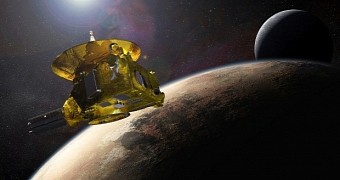
 14 DAY TRIAL //
14 DAY TRIAL // 
